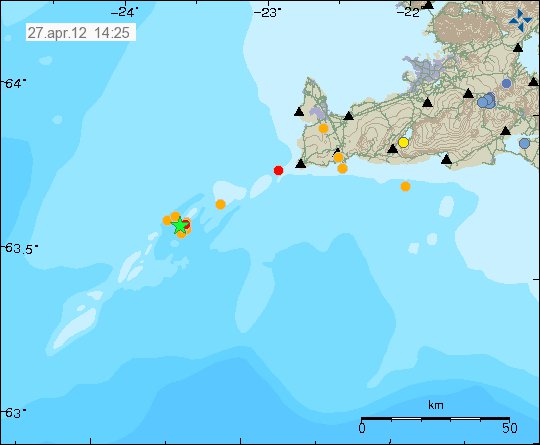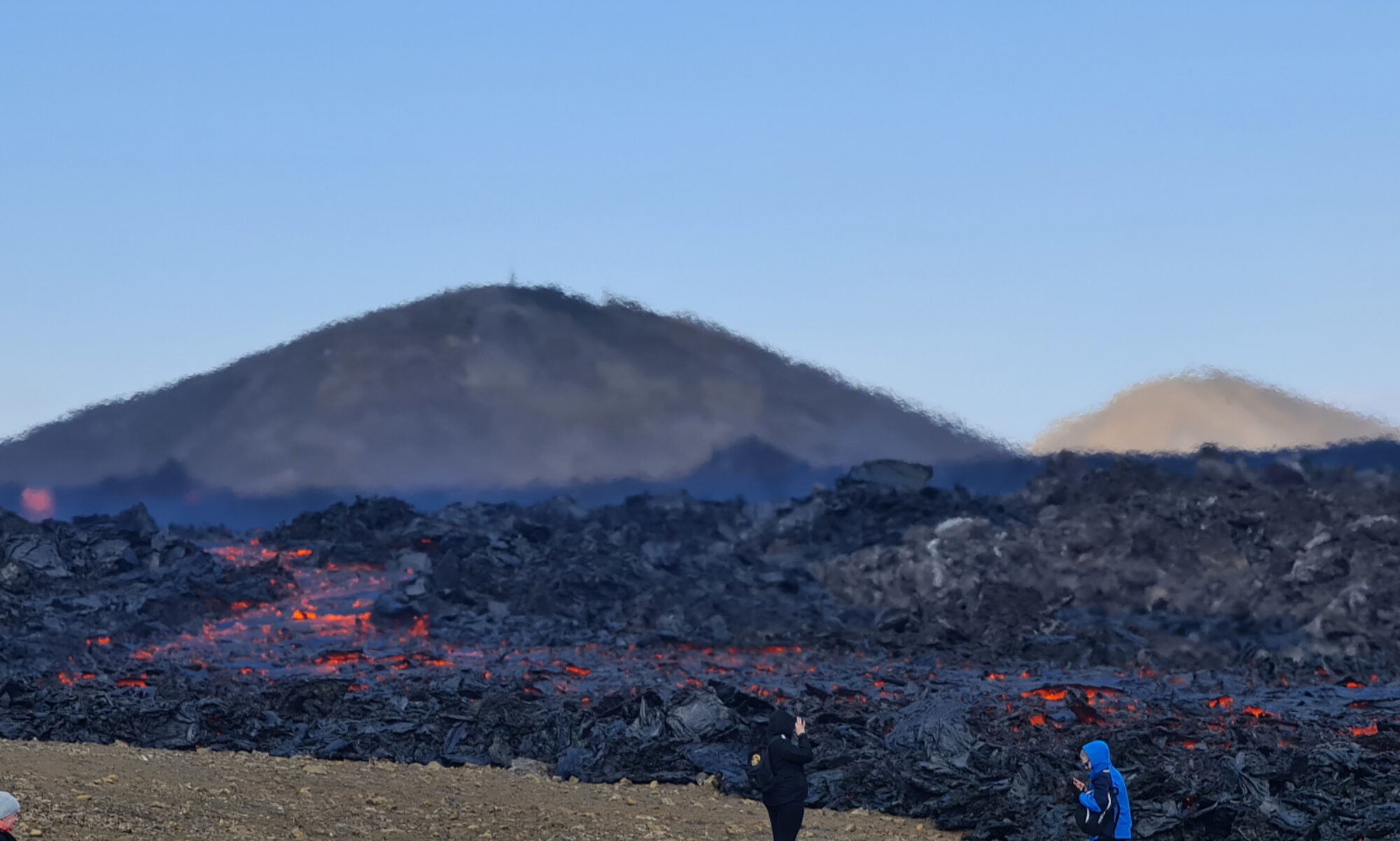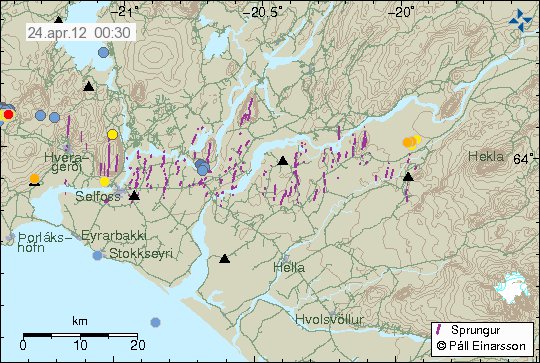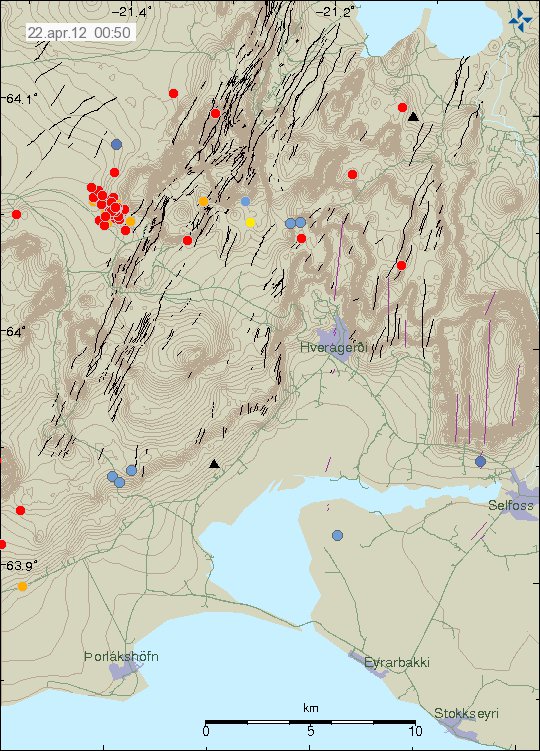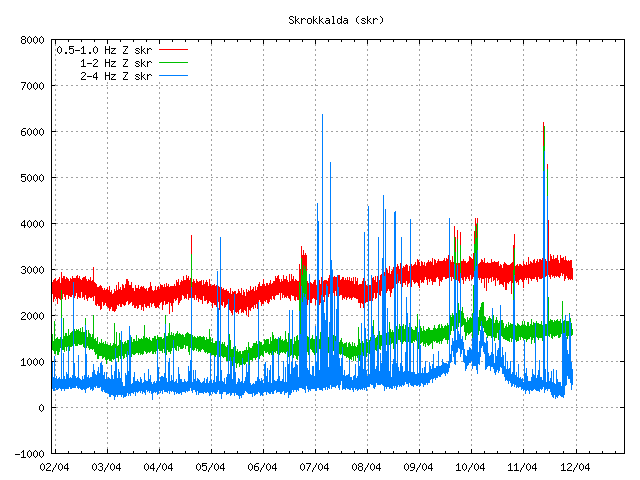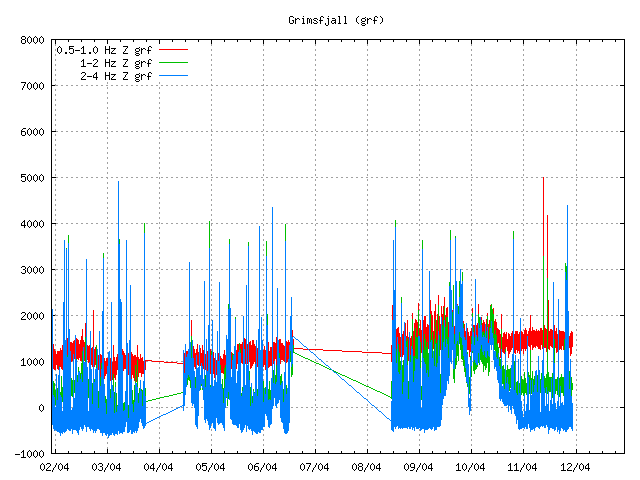The newspaper The Telegraph has scary news about volcanism in Iceland. They have scary claims like this one here.
[…]
Katla’s eruption in 1918 produced five times as much ash as the 2010 Eyjafjallajökull one. A major eruption could result in large parts of Iceland being flooded as snow and ice melted; significant poisoning of Icelandic agriculture; destruction of property; and, of course, the grounding of aircraft across Europe.
[…]
Well, the Katla volcano has many different types of eruption. For instance, the July 2011 eruption in Katla volcano was small. There is no way to know what happens until a eruption starts in Katla volcano. When ever that might. As for “large part of Iceland being flooded”, this is just rubbish and bad reporting. Less then 1% of Iceland would get flooded in the case of eruption in Katla volcano. What area exactly depends on where the eruption takes place under the glacier. The largest area that can get flooded if the glacier if the flood goes down Þórsmörk and close to the area east of the village of Hvolsvöllur. Eruption in Katla volcano is going to destroy roads, bridges and other things in its path. But that is to be expected. In fact, Icelanders living in the area well aware of what a eruption in Katla volcano means to them.
[…]
If enough material is ejected it could even have a cooling effect on the global climate for a few years. A precedent for that would be the 1783-84 eruption from the fissure of Laki, which is part of the same volcanic system, Grímsvötn, that erupted last year. This was a very large eruption of 15 cubic kilometres (3.6 cubic miles), compared to the fraction of a cubic kilometre ejected in 2010, and had a huge impact on the northern hemisphere, reducing temperatures by up to 3 C.
[…]
Well, no. The reason is that Katla volcano is unable to make that large eruptions most of the time. The largest eruption that is known is the Eldgjá fissure eruption in Katla volcano that took place sometimes around the year 934. As for cooling it is worth noticing that Mount Tambora eruption that was VEI=7 in the year 1815. But it only did drop the temperature around 0.4 to 0.7C (called Year Without Summer). A temperature drop of 3C would create glaciers in Europe all year round. Even Laki eruption in the year in 1783 did not cool the northern hemisphere down to 3C. That amount of drop in temperature would equal a new ice-age in Iceland, Europe and North-America.
The last eruption in Grímsfjall volcano (May, year 2011) did not have this effects. But was at least VEI=4 in size. But that eruption was many times larger then the eruption in Eyjafjallajökull volcano in the year 2010. So facts do not support the claim this news from The Telegraph is making.
This claims, among others in this types of news is nothing but fear mongering news. It is meant to scare people. Why, it is my guess that it about news paper sales.
Scary News from The Telegraph
Iceland volcano: and you thought the last eruption was bad…
